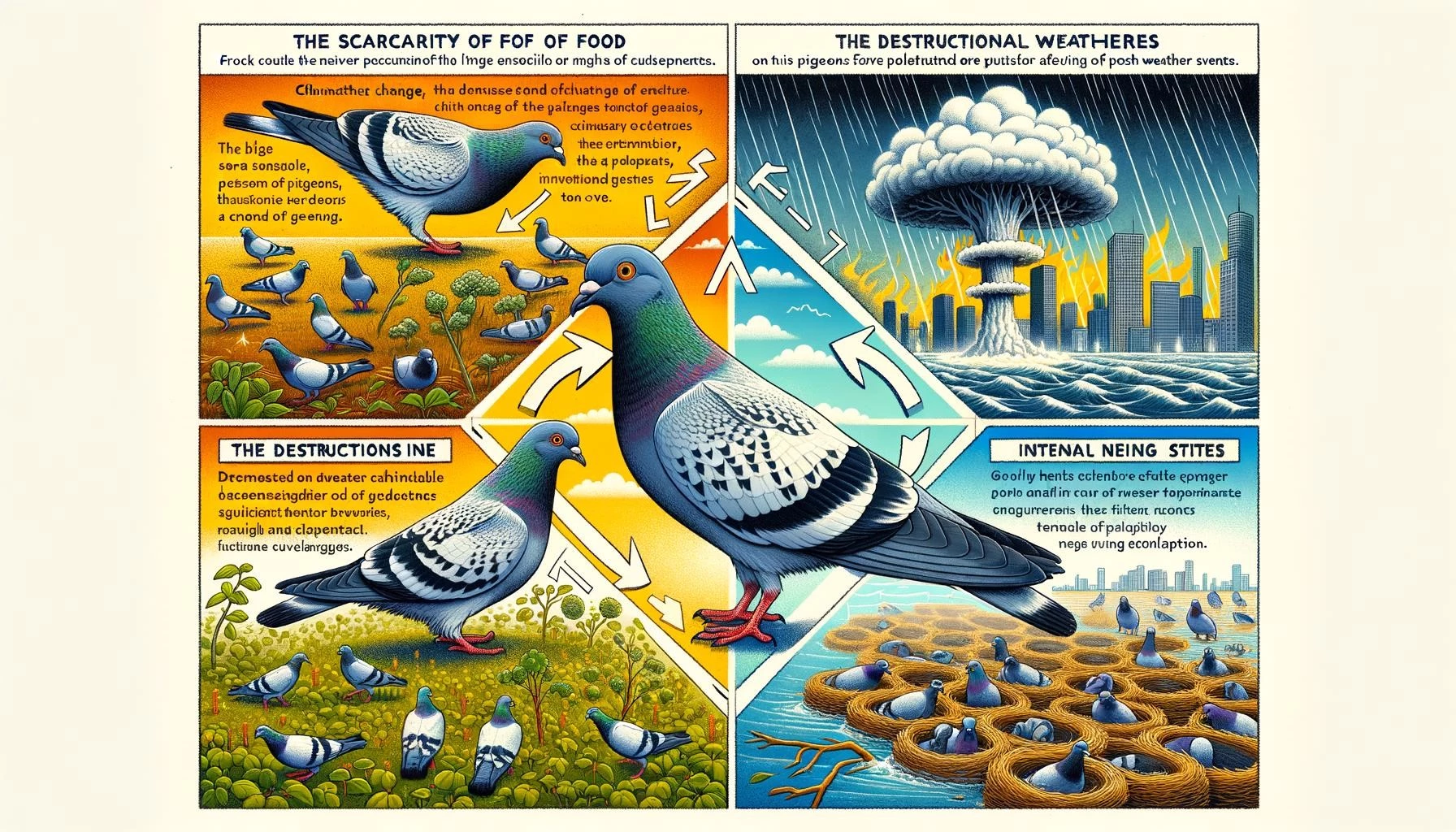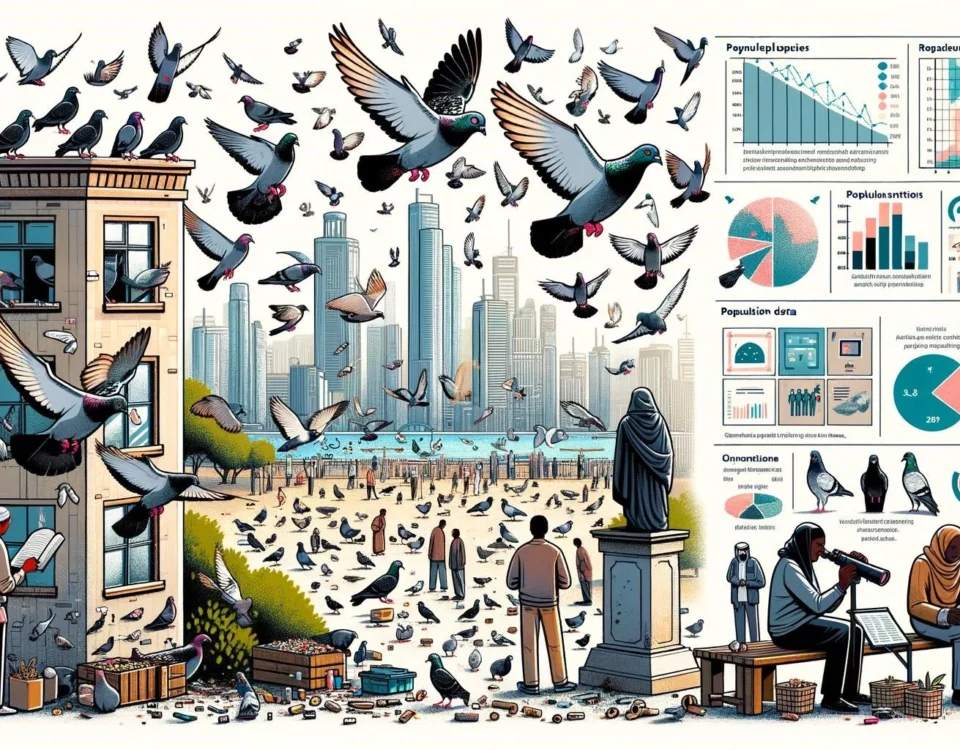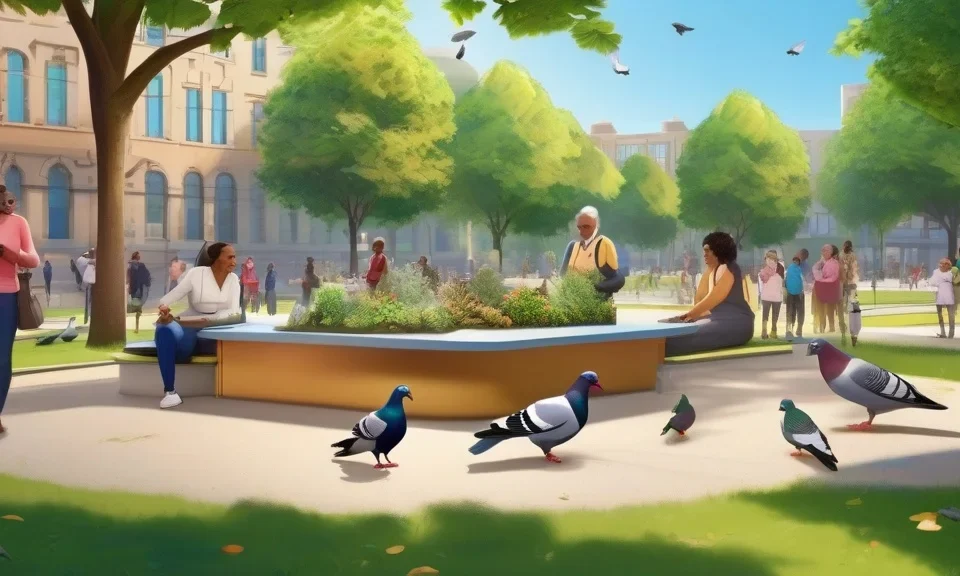Climate change is a global phenomenon that is impacting every aspect of our environment, and birds are no exception. Pigeons, as one of the most common and adaptable bird species, are also facing the consequences of climate change. This article will explore the various ways in which pigeons are being affected by climate change and the potential implications for their populations and ecosystems.
Key Takeaways
- Climate change is causing shifts in temperature, weather patterns, and habitats, which are altering the availability of food and nesting sites for pigeons.
- Extreme weather events, such as heatwaves and storms, are becoming more frequent and intense due to climate change, posing risks to pigeon populations.
- Pigeons have shown some adaptability to changing conditions, but the extent to which they can cope with long-term climate change impacts is still uncertain.
Impact on Food Availability
Climate change is altering the availability and distribution of food sources for birds, including pigeons. Changes in temperature and precipitation patterns can affect the growth and abundance of plants, which in turn affects the availability of seeds, fruits, and other food sources that pigeons rely on.
In urban areas, pigeons often rely on human-derived food sources, such as discarded food items. However, climate change may also affect these food sources indirectly. For example, extreme weather events can disrupt the availability of food waste, as floods or storms can wash away or destroy these food sources. This can impact the nutritional needs and reproductive success of pigeon populations.
Altered Nesting Sites
Climate change can also affect the availability and suitability of nesting sites for pigeons. Rising temperatures and changes in precipitation patterns can impact the growth of vegetation, which in turn affects the availability of suitable nesting materials and locations.
Pigeons often build nests in urban areas, using ledges, rooftops, and other structures. However, changes in weather patterns and extreme events, such as storms and heatwaves, can damage or destroy these nesting sites. Additionally, changes in vegetation and tree cover due to climate change can reduce the availability of natural nesting sites in urban and rural areas.
Risks from Extreme Weather Events
Extreme weather events, such as heatwaves, storms, and heavy rainfall, are becoming more frequent and intense due to climate change. These events can pose direct risks to pigeon populations, such as increased mortality from heat stress and building collapses caused by strong winds.
Furthermore, extreme weather events can disrupt the availability of food and water sources for pigeons, leading to reduced reproductive success and population decline. For example, prolonged droughts can dry up water sources, making it difficult for pigeons to find drinking water.
In conclusion, pigeons, like many other bird species, are facing significant challenges due to climate change. Changes in temperature, weather patterns, and habitat availability are impacting their food sources, nesting sites, and overall well-being. While pigeons have shown some adaptability to changing conditions, their long-term ability to cope with the impacts of climate change is uncertain. Addressing climate change and implementing conservation measures to protect pigeon populations and their habitats are crucial for their survival in the face of a changing climate.









